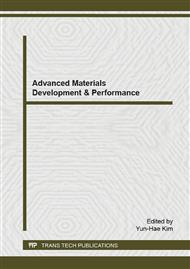p.107
p.113
p.118
p.125
p.130
p.136
p.142
p.148
p.152
Development of Forming Method for Aluminum Alloy Channel with Curvature and Modified Cross-Section Shape in Rotary Draw Bending
Abstract:
In the manufacturing industry, metal cross-sections and profiles are manufactured by using extrusion as the primary process. Subsequently, the products are generally subjected to bending in a secondary process. However, long products with the same cross-sections are typically mass-produced by one extrusion. In industries that manufacture such products, there have been increasing demands for flexible manufacturing systems that can be used for low-volume diverse products. However, it is difficult to adapt traditional manufacturing systems to this requirement. In this study, we aimed to develop a new bending method that can be used to deform the cross-sections of existing versatile extruded sections, such as channel materials and rectangular tubes, to several types of cross-sectional shapes and to simultaneously impose a desired curvature on them. The rotary draw bending process for an aluminum alloy channel material without tensile flanges was investigated by using the finite element method and experiments. The effects of the bend angle and thickness ratio on the cross-sectional deformation were examined. Furthermore, the influence of additional axial tension on the channel materials was studied. Additional axial tension can be used to control the outward and inward deformations of the webs. In addition, it was confirmed that the axial tension is very effective in preventing wrinkling and folding.
Info:
Periodical:
Pages:
130-135
Citation:
Online since:
June 2015
Authors:
Price:
Сopyright:
© 2015 Trans Tech Publications Ltd. All Rights Reserved
Share:
Citation:


